159: Spirals in the Pacific
Maori spirals had their origin in the Pacific right? Actually, no they didn't. The reason being is that there isn't any. So where did Maori learn to carve spirals? An academic would say the fern fronds, and that might seem plausible on the surface of it.
Academics would suggest such from their beliefs that when Maori arrived they suddenly created new art, new tools, new clubs, new houses, new clothes and new styles the day they arrived. They travelled the hills and valleys and discovered new stone sources... all within 20 years. Once again that might be plausible but based on the condition of the Wairau bar skeletons and their physical deficiencies, they had all they needed in the moa, why travel to the remotest regions of the island to find stone that exists in only a few specific locations that they didn't;'t even know existed, and why travel there f they didn't know it existed? If they were hunting moa for the first 50-60 years where they were, why travel into remote and inaccessible places to find something they didn't need (adzes for agriculture or weapons for non-existent warfare?) Why are these questions constantly passed over? But back to the spirals...
Polynesia has only one true example of a carved rock spiral. That resides in Fiji. Fiji was regarded as the extreme edge of Melanesia. Melanesia is full of rock spirals. Yet NZ has many. Melanesia also has many. This seems to suggest that Melanesians were here long before the Polynesians arrived and the Polynesians adapted the styles of what they saw carved here in stone and wood. Before the Melanesians, we know that those in the far north knew little of spirals, but used spikes, lines, chevrons and grotesque creature forms. Many figures also had three fingers, not four.
The South Island rock drawings have no spirals. That is because Maori only arrived in the South around 1680 with the Mamoe defeating the Waitaha. Waitaha did not use spirals either because they were Polynesians. The Moriori also has little in the way of spirals
Let us then ask not so much how spirals got here, but how they didn't get here. We do that by examining the incidences of spiral petroglyphs within the Polynesian Pacific, and that includes New Zealand. Now keep in mind that Maori were supposed to have come from Polynesia around 1280AD. The only spiral art on rocks recorded in NZ is very old and dates as recent as 1200 and back many hundreds of years before that judging by the worn nature of the designs compared to other countries where such designs are thousands of years old. But lets us assume that Archaic Maori carved these designs as we are told by Archaeologists. These archaeologists maintain that Polynesia is full of spirals. Really? Ok, show the NZ public where they are? Name the island, name the site. These pompous academics are full of horse manure. They say one thing and can produce not a jot of evidence to support it. They cannot point to anything, because the Polynesian who came here had no spirals at home! Some of you may have just twigged to that fact. Good on you, cracks are appearing in the lies fed us all.
Yes, that is right. There are no spirals in any Pacific country where Maori could have come from, (not that we have seen yet). Not from the Society Islands, not Tonga, Samoa has none, there are none in Hawaii, or even Easter Island… But Fiji has one, just one. Fiji is, of course, in Melanesia. Oops, sorry... there is one in Hawaii. It is on the small island of Lanai.
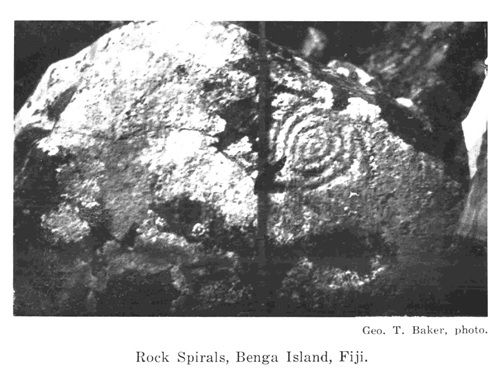
It is said that it is likely the Fiji spiral; was carved by those coming from NZ. Yeah, that is possible of course, but Maori did sail back to Rarotonga, Samoa and Tonga etc, so why are there no spirals there also? Another question the academics would not want to answer.
So here is the point – the spiral in NZ rock art (from which the Maori copied onto wood and make even more elaborate and exquisite carvings) was here long before the Polynesians we now call Maori arrived here. Some say it as because the Celts arrived here. Preposterous. What a crazy and stupid suggestion. An open boat of celts sailing 23,000 km over the roughest oceans known to man and leaving spirals in rocks and no carved plinths or other designs? Do not embarrass yourselves...! Anyway; the spiral is a very old symbol worldwide. But strangely - not in the centre of the Pacific.
An awful lot of Pacific petroglyphs are in the form of human figures such as shown below. This type of figure is common all around the Pacific in the most ancient of representations.
Not even in The Marquesas Islands do you find a true spiral. The only thing close enough in the Marquesas Islands to a spiral is this...and that is akin more to designs in Europe.
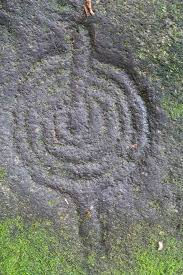
The only true spirals anywhere near are from New Caledonia (Melanesia) in the far west near Australia. Here is one such example...
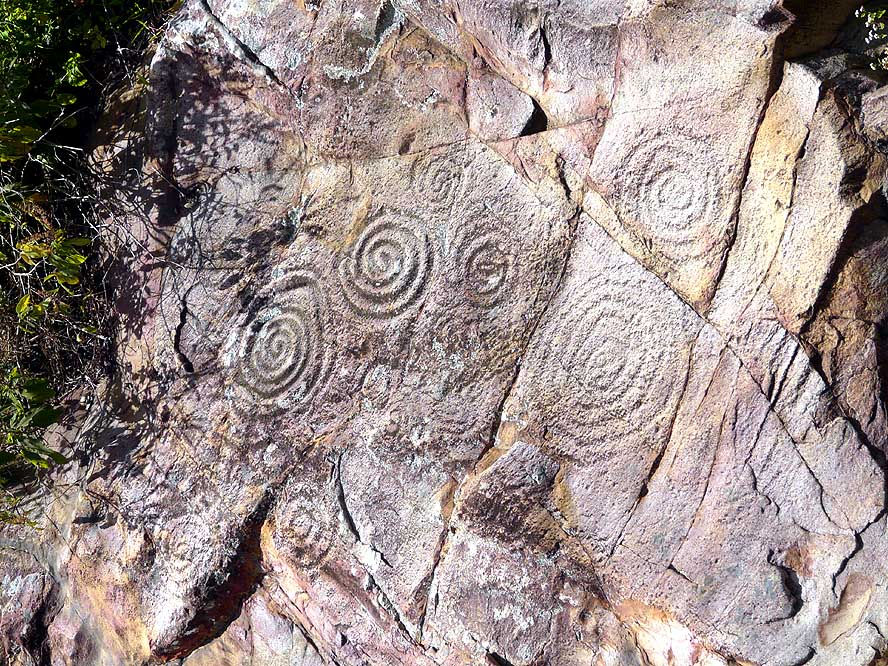
Does that means the spiral came with the Melanesian migration to Aotearoa that arrived before the Polynesian immigration. We think it did? Are the ones we seek a race of ancient and every tall red headed Melanesians? After all there are many Melanesians with red hair... but back to the spirals.
The only other type is on the far side of the Pacific…in Alaska. We wonder what that might mean...?
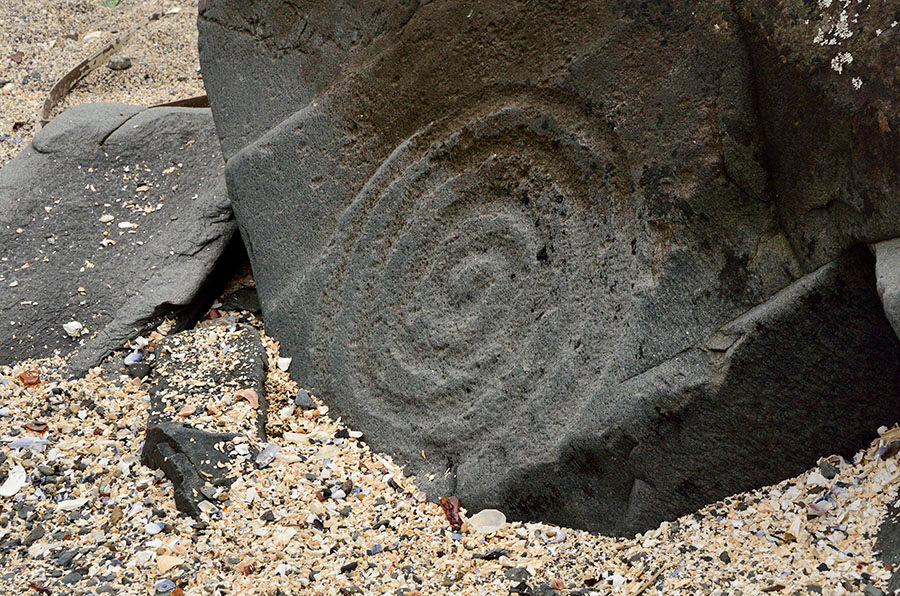
Then you have to go to the likes of Indonesia, Africa and Europe to find other examples. There is far too much conjecture to know for sure where the origins began until we have the DNA evidence we seek from the bones.
And below is another one being damaged by time and tide on a West Coast beach IJ found. As with the Raglan rocks, also on the West Coast of the North Island (where local Maori knew nothing of them when they were first discovered by a European), they are left to the elements with no formal protection. Others like those at Matira, those still in the hills, and some on remote beaches like this one overturned by waves, are still being found. Raglan though, is an interesting example. It is odd that no one protects such easily accessible rock carvings considering such a site should have been sacred to Maori. Maori would be all over this wouldn't they? Apparently not. They aren't even noted on the archaeological record. Think about that one for a moment! The Raglan petroglyphs are not even noted on the archeological record. But if they are not carved by your 'ancestors' – they are just rocks, right? (!) This simple fact alone proves they all know Maori did not carve them.
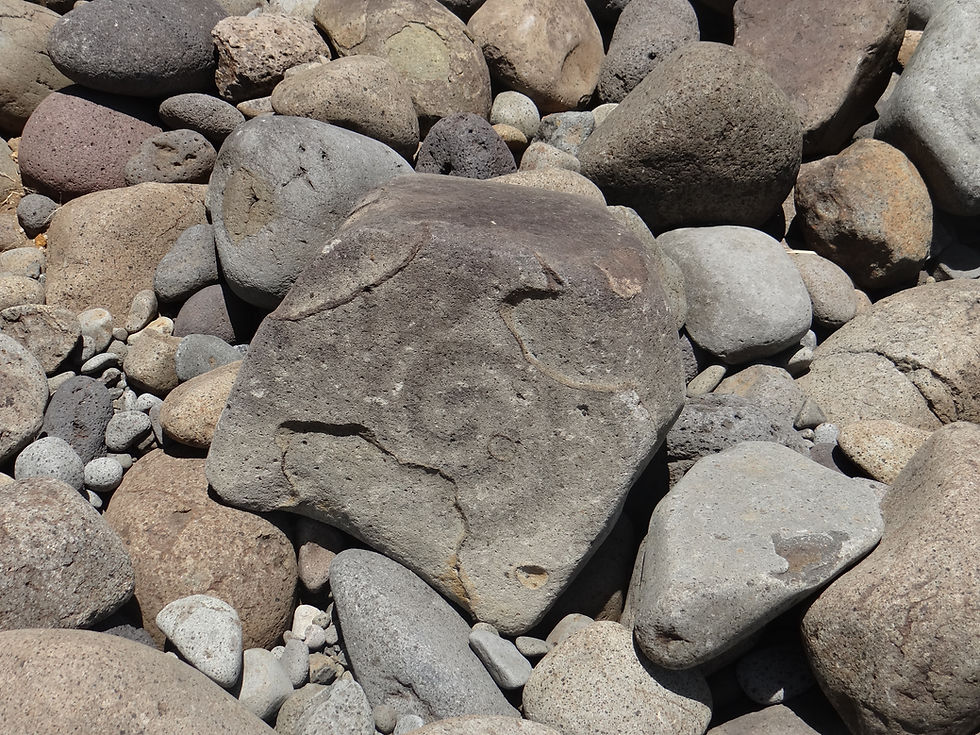
For the moment, forgetting about where the influence of spirals came from that appeared in NZ, lets us ask a pertinent question. The Pacific of Polynesia is practically devoid of spirals, yet NZ has many supposedly done by Maori who came from Polynesia who did not know spirals in their islands of origin? Why is this?
There is only one probable answer – because Maori did not carve the ancient rock spirals found in boulders and rocks around the country. Those designs were here before those we now call Maori arrived. They were created by the races that were here first, the first inhabitants of Aotearoa (the name Maori obtained from the previous inhabitants)… the true Tangata Whenua.
We at Tangatawhenua16 are not too interested in how the real Tangata Whenua developed the spirals, or even from whom they copied them - eventual DNA testing of the skeletons may hint on any ancient bloodlines from elsewhere. What we are interested in is showing just by logic that many Maori styles were learned and adapted styles, not ones suddenly created by Maori. And the logical proof is stated above even if those learned academics who thrive on logic continue to deny it. You have to support your denial by explaining how a race that did not know the spiral suddenly started carving spirals on rocks within ten years of arriving (as stated by archaeologists saying that various rock petroglyphs in Taranaki are archaic Maori carvings), and then suddenly stop carving rocks within another 50 years, all the while making stone tools the same way for another 400 years. Once again, think about all this!
There is an example of a turtle carved on the Anaweka waka, which is a canoe that is made from NZ wood within a short time of the migration of one waka to these islands. This is because the turtle was a form they were familiar with from the home islands and a from those living could still remember. Of course wood rots - which is why only two examples remain in existence so far.
But rocks... they last a very long time.









































